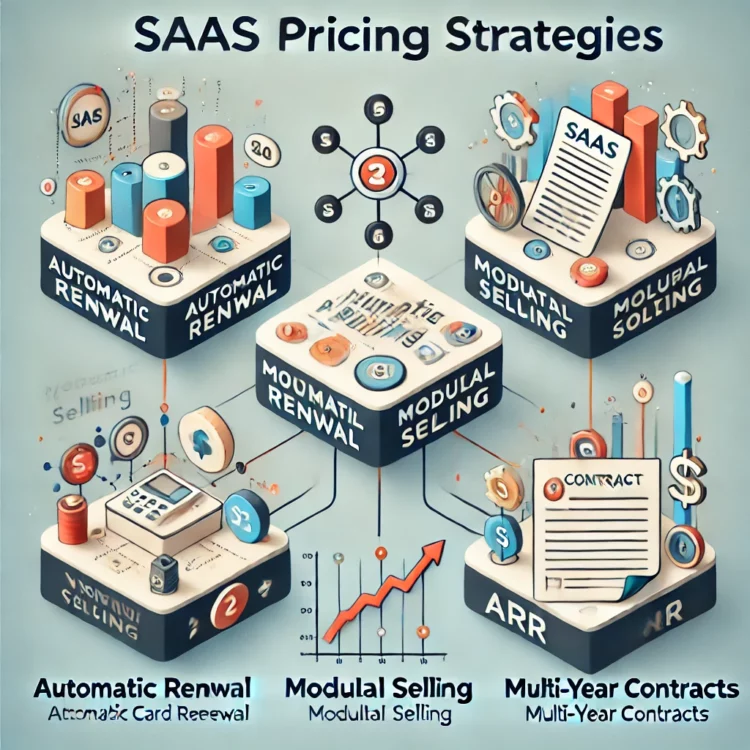The Partnership Paradox: Why Most Fail and How to Make Yours Succeed
At this point, you may be asking yourself a legitimate question: “But why bother entering a new market?” Like many, you may have heard of another much easier, quicker, and more profitable way to generate an additional source of revenue: the famous partnership.
The idea of the business partnership is relatively simple. You find a company in your market offering a complementary product to yours and, consequently, addressing the same audience as you. Then, you “just” have to establish a business agreement that allows your new partner to resell your solution in exchange for a fixed margin or a percentage of the profits earned. The deal seems ideal: you can sit back and do nothing but maintain your product while your partner sells it. The good life. Right?
It works perfectly on paper. But in reality, generating additional revenue through a partnership requires a more complex implementation than it seems at first.
Partnership: The Great Illusion?
The story of my first partnership begins in Poland in March 2014. In the course of another intelligence mission I was leading, I found myself in a prestigious hotel in Warsaw. At around 10:30 P.M., the lobby was virtually empty. An unusual character caught my attention among the few European businessmen still lingering there. He had abandoned the traditional suit customary in these places for a simple blue shirt and navy Dockers. Sitting comfortably in his armchair, he aroused my curiosity. Our eyes met briefly.
Later that evening, a mutual acquaintance introduced us, giving us an excuse to strike up a conversation. He began by saying, “I’m intrigued. May I ask what you do for a living?” I didn’t reveal the reason for my presence in Poland, but I was delighted to pitch him my entrepreneurial venture.
“I’m the founder of MYK Applications, a startup specializing in information management. What about you?”
“What a coincidence! I’m really interested in that area. We should schedule a meeting to discuss it more!”
“Hmm… Maybe, but you didn’t answer my question.”
“Oh, sorry! I’m Dan Halpern, Managing Partner at Deloitte. Here’s my card.”
What was the probability of my meeting the man who runs one of the largest consulting firms in the world at 11:00 P.M. in a Polish hotel? Minimal certainly. So, I seized the opportunity without a second thought. Appointment scheduled. We met on D-Day, a few thousand miles away, for a particularly intense exchange. This guy didn’t end up in this large office overlooking the business district of Tel Aviv by chance; he had a very keen mind.
I started by describing our activities as precisely as possible and, I admit, in a very dramatic way. Then, Dan shared his idea with me: the idea was to create a partnership between a company he had just bought and our startup in order to combine consulting and information management technology.
“We have a portfolio of existing customers. You have a technology that would allow us to sell integration support. Why not make a deal?” I pretended to consider the negative aspects of such a partnership, but of course, my decision was already made. Our startup was struggling to cover its fixed costs, and here we had the opportunity to use the strike force of the largest consulting firm in the region. It was an incredible opportunity.
We continued with a meeting with the head of the department concerned, who, curiously, received us rather coldly. The conversation centered around the customers we were targeting. The possibility of synergy was confirmed – for several months certain law firms advised by Deloitte had been expressing a desire for an information management platform. Even better, a committee of the most important offices was recently established to move forward on the selection of a technology solution. A consultant working at Deloitte was on it. The opportunity was real; moving forward with a partnership made perfect sense.
We then had a lengthy in-depth conversation about the ideal business model. Should they earn a premium? Would it be better if they got a fixed percentage on every sale? Should they be granted an annual license on the basis of a predefined use? These questions occupied us for several weeks.
The next step was to sign a trade agreement, which also required a lot of back and forth about final clauses and various terms. This was all new to me. So, we had to put our offer together carefully: a common presentation, a standard contract, access to a demonstration platform, and several training sessions. As entrepreneurs, we only needed a few days to put these marketing basics in place. However, we didn’t take into account the bureaucratic slowness of a company like Deloitte where every little decision took a long time.
By this time, four months had already passed. We never imagined spending so much time on this. No problem, the prospect of new non-stop sales (we are talking about Deloitte after all, and that’s not nothing) kept us going.
The contract was signed, but again weeks went by without the slightest murmur. We didn’t bet our commercial development on this partnership, but all the same, we expected at least some client requests. Nothing happened. We were then assured that the product was regularly offered during customer meetings and we must be patient. OKAY. The initiative may not be as profitable as expected, but it’s still a significant source of additional revenue. Big business’s clock is not set like ours. Let’s give ourselves a chance.
More months passed. We recognized there was a problem. Did we choose the wrong approach when building this partnership?
In reality, it seemed that lack of experience wasn’t the cause. This was evident when I observed the same scenario years later experienced by a renowned business leader, 12,000 miles away and in a different industry. There, too, the synergy was obvious: a company specializing in information services (Technomic) joined forces with a software and database expert (CHD), both working in exactly the same market segment. As with Deloitte, the partnership was carefully thoughtout, crafted, and refined over many months. And in the same way, the smaller of the two companies saw time passing without under- standing why customer requests weren’t flowing in. The same excuses were given: the length of the sales cycle, multi-level decision making, etc. These two unfortunate experiences reminded me of a refrain I’d heard over and over again, “partnership = bullshit.” An adage that, while not very polite, is widely used in the world of startups. Should we believe it? Is partnership really a waste of time?
No. For it to work, though, three conditions must be met.
The Conditions for a Successful Partnership
I eventually noticed a common denominator among the partnerships that didn’t generate any significant results: the product concerned wasn’t sufficiently promoted.
Returning to the story of my venture with Deloitte, there was no shortage of active pipeline client opportunities. We might receive two to three implementation requests each week. The problem wasn’t with the customers. It wasn’t linked to the offer either since the combination of a knowledge management methodology and software made sense to the main stakeholders. The real concern lay in the “product ownership” aspect. To put it clearly, without one person in charge who is accountable for the adoption of the product, the partnership is likely to disappoint.
An ideal pattern emerges:
- One Product Manager
- … in direct contact with customers
- … financially incentivized to sell your solution.
Undoubtedly, this is a step in the right direction. But is it enough? Not always.
Let’s take a look at the case of Jimmy, an entrepreneur who designed a digital solution for restaurateurs. With several small business successes under his belt, he partnered with the largest American distributor of restaurant products, a move that offered 500,000 new potential customers. Jimmy could now count on a sales force of motivated salespeople, whose bonuses were indexed to the average order placed by restaurateurs, acting on the ground. All three conditions were met. However, the results didn’t materialize, and the entrepreneur came to me in early 2019 so we could find a solution together.
The key takeaway? A salesperson with a wide range of products to promote doesn’t have the same impact as a sales- person responsible only for your product.
This leads me to revise the essential conditions for a successful partnership:
One person exclusively responsible for your product
… in direct contact with customers
… financially incentivized to sell your solution.
Note: A salesperson with a wide range of products to promote doesn’t have the same impact as a salesperson responsible only for your product.
Take the example of Salesforce, which owes much of its success to its partners. Every consulting company today has a “Salesforce” consultant. These consultants guide each integration project without failing to recommend the solutions offered by Salesforce. They’re in direct contact with customers, don’t push any other product, and receive a financial incentive on all sales. This formula is magic. This additional revenue stream now represents hundreds of millions of dollars for Salesforce. And it’s based only on well-oiled partnerships.
The Ideal Partner
Do you like pita-falafels? You should. Because this traditional Middle Eastern bread perfectly illustrates a concept of micro-economics which itself recalls the functioning of a partnership. I first heard about it in a university lecture hall when I was still a young student in physics and economics. The professor was explaining the concepts of substitute and complementary goods.
For many writings today, you can choose to read them in a hard copy or on an e-reader. In economics, paper books and electronic books are interchangeable goods. If the demand for ebooks increases, the demand for paper books tends to decrease: one product replaces the other. It’s a substitute.
Conversely, there are so-called complementary goods. This is the case of the racket and tennis balls. If the price of rackets falls, demand is likely to increase, with more potential players having access to the sport. Consequently, the number of balls sold increases since they are essential for using the racket! Middle Easterners love food symbols. So, they naturally trans- formed the concept of complementary goods: “racket/tennis balls” became… pita-falafel!
Let’s go back to the subject of partnerships.
Are you looking for a partner? Think in terms of complementary goods or services. Look for a growing company that allows you to grow with it. Also, make sure that one of their sales reps will have no other job than to promote and sell your solution.
An Effective Method
To sum up, I’m convinced that a partnership can play an important role in your scale strategy. But it’s important to respect certain conditions and not to embark on the venture without a formula. Here’s the one that ultimately worked for us:
Look for a company operating in the same market as you, whom your customers often talk about in positive terms. Don’t waste time tweaking and negotiating every detail of a busi-
ness agreement. Instead, choose a few customers who are representative of your target. Make them a joint offer. Do they ask for a business proposal after your presentation?
If so, and only if so, write up the major points for your partnership.
Make a joint commitment to canvassing a well-defined list of clients in a relatively short period of time. This will give the project a healthy rhythm. Assign and train a salesperson, and give him a specific additional revenue target.
Fate is sometimes mischievous: as I write these lines, I’m working on simplifying and redefining the contours of our partnership with Technomic. Based on the results observed in the last months of our partnership (before CHD was acquired), it seems that the initiative has become much more successful than in the previous three years…
A partnership can be a powerful lever for generating additional revenue without the need to venture into a new market alone. It offers the potential for rapid expansion, leveraging an existing customer base and sales infrastructure. However, as many entrepreneurs have discovered the hard way, not all partnerships live up to their promise.
To avoid disappointment, it’s crucial to approach partnerships with a clear strategy. Choose this path only if:
- You’ve identified a partner whose business is thriving and whose products genuinely complement your own.
- A dedicated individual within the partner company is accountable for selling your solution, ensuring it doesn’t get lost among other offerings.
- Your joint value proposition resonates with test customers, leading to real sales rather than just enthusiastic discussions.
When these conditions are met, a partnership can evolve into a significant and sustainable revenue stream. If not, you risk investing months—sometimes years—into a collaboration that never truly materializes. Success lies not in the mere existence of a partnership but in its execution. Get it right, and you’ll tap into a growth engine that scales alongside your business.
— Lionel Benizri —







